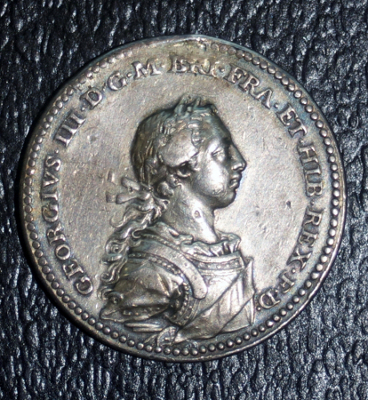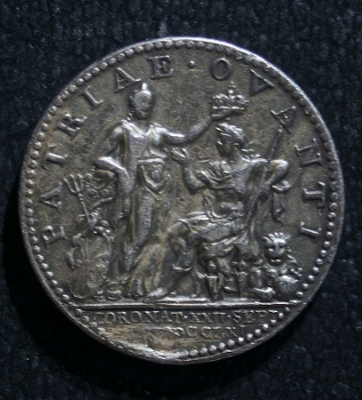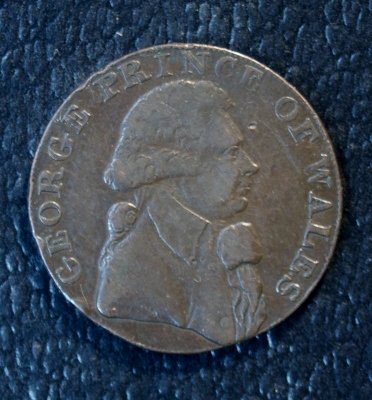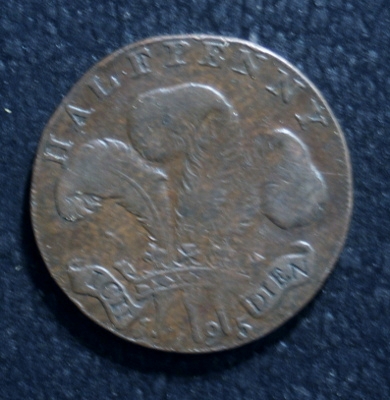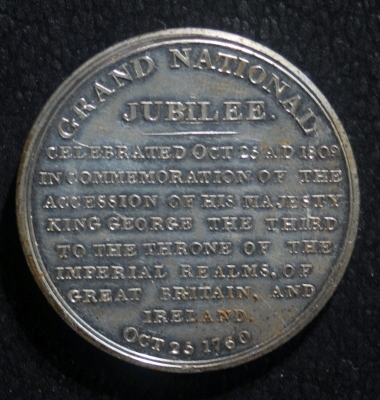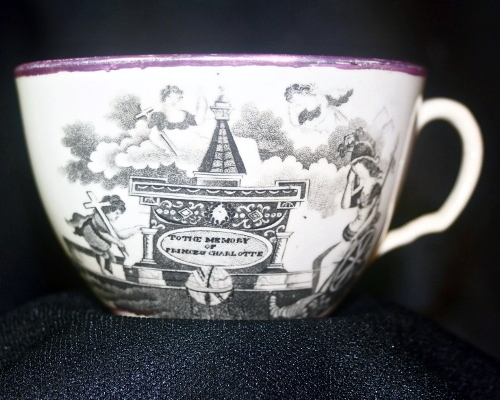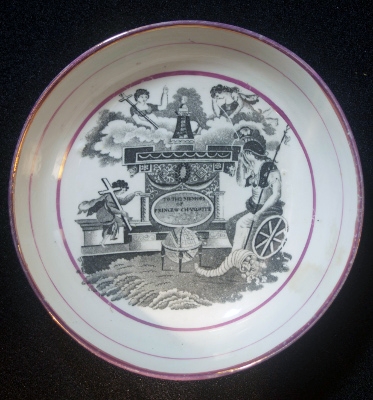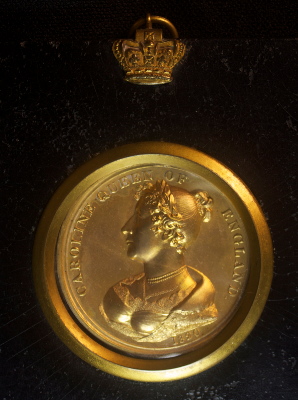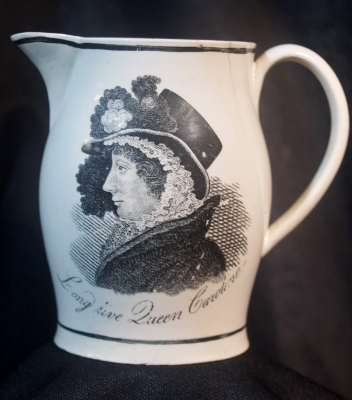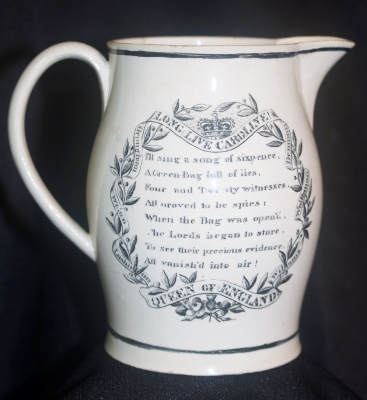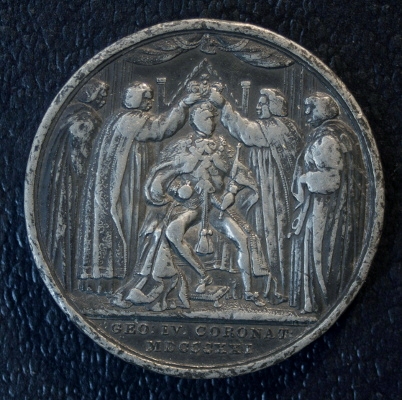|
on 16 February 1813, Jane Austen wrote to her longtime friend and housemate, Martha Lloyd:
I suppose all the World is sitting in Judgement upon the Princess of Wales’s Letter. Poor Woman, I shall support her as long as I can, because she is a Woman, & because I hate her Husband—but I can hardly forgive her for calling herself “attached & affectionate” to a Man whom she must detest. . . . I do not know what to do about it;—but if I must give up the Princess, I am resolved at least always to think that she would have been respectable, if the Prince had behaved only tolerably by her at first.—
But why should Jane Austen have “hated” George Augustus Frederick—Prince of Wales from his birth until 1811, Prince Regent from 1811 to 1820, and King George IV from 1820 to his death in 1830? An obvious reason was that “Prinny,” as many impudent subjects called him, was an easy figure to despise. He brazenly personified the three themes of JASNA’s 2012 AGM—sex, money, and power. That is, he compulsively sought heterosexual conquest, especially in his younger years; he abused the power he did have and was never shy about scheming to obtain more; and he spent money like water, as long as it was someone else’s!
Biographies of Prinny by Hibbert, Smith, and Parissien make strenuous efforts to present a balanced portrait. In particular, they note his role as royal patron of the arts, as well as the support he provided (both intentionally and through indecision) for pursuing the Napoleonic War to its conclusion. This acknowledgment is as fair as I intend to be about Prinny’s accomplishments, however; I consider myself as “partial, prejudiced, and ignorant [a] Historian” (Juvenilia 176) as the young Jane Austen claimed to be in “The History of England”!
In this essay I will not address the circumstances surrounding the dedication of Emma to Prinny, since the episode is well covered by all biographers of Austen, as well as by some recent contributors to JASNA’s journals.1 I am more interested in how Austen developed her view of Prinny—which I believe was already fixed by the time of the Emma dedication. I have three goals here: to summarize enough of Prinny’s iniquities to justify Austen’s dim view of him;2 to present some possible reasons—linked to her early life in Steventon, Hampshire, and to two of her beloved brothers—why Austen might have disdained Prinny even more strongly than the average literate Briton did; and to make some broad suggestions about how Austen’s view of Prinny might have influenced both her Juvenilia and her mature work.
To understand Prinny, we need to understand a few things about his father, King George III. Although monarchs and heirs in the House of Hanover all got along badly, this particular relationship was uniquely stressful. As a boy, George III was shy, serious, and inflexible. Moreover, his own father—George II’s despised oldest son, Frederick, who died when young George was only twelve—urged him in a testamentary letter to “regard family, dynastic, and national interests as inextricably bound together” (Tillyard 19). George was thus easily talked out of following his first inclination to marry a commoner and, after he succeeded to the throne in 1760, talked into marrying a plain but suitable German princess, Charlotte of Mecklenburg-Strelitz. (Because the 1701 Act of Settlement required the royal family to marry Protestants, German princesses were almost the only possible choices.) The two met for the first time on 8 September 1761, and were married five hours later; they were crowned on 22 September. The silver medal commemorating George’s coronation shows an attractive portrait of this shy, serious young man. The legend on the front reads, “Georgius.III.D.G.M. Bri.Fra.et Hib.Rex.F.D.” (George III by the Grace of God, King of Great Britain, France and Ireland, Defender of the Faith). The sentiment on the reverse, “Patriae Ovanti/Coronat.XXII.Sept/MDCCLXI” (For His Rejoicing Country/Crowned 22 September 1761), was not, as far as I know, repeated on any commemorative medals for Prinny’s coronation.
Silver George III coronation medal (1761).
On 12 August 1762, Prinny was born. In the next twenty-one years, he was joined by fourteen brothers and sisters. The royal children were brought up in the same plain, sober, strict manner as the King and Queen adopted for themselves, and the King, though a concerned parent, proved no more perceptive than Sir Thomas Bertram in Mansfield Park is about his children:
[T]he King . . . was prone to go up and check on his sleeping children at six in the morning. . . . No detail of their life was too small to interest him. But, just as he knew every facing of every military uniform and did not know why the American colonies were rumbling with dissatisfaction, so he had no particularly good grasp of his children’s different personalities. (Fraser, Princesses 14)
George III’s grasp of Prinny’s personality was especially poor, as it was the polar opposite of his own: unrestrained, self-indulgent, and emotional to the point of hysteria. Prinny showed an early talent for abusing his power as heir to the throne by instigating a “nursery revolution” at age thirteen (Hibbert 25) against the Princes’ strict tutors and governors: the boys started treating them so contemptuously that the whole team had to be changed. Unfortunately, the new ones proved no more effective than the old, and by his mid-teens Prinny was “launching into a world of dissipation . . . [that] became public knowledge through the newspapers” (Smith 11).
In 1779, Prinny got into his first major romantic entanglement, with actress Mary Robinson. (Covering his minor affairs would be impossible here; even a book titled The Mistresses of King George IV [Levy] discusses only the five principal women.) Prinny wrote Mrs. Robinson compromising letters, and the eventual price for their return was £5,000 plus an annuity of £500. (Mrs. Robinson later became a woman of letters of a more respectable sort; her portrait hangs today in Chawton House Library.)
When Prinny came of age in 1783, George III granted him Carlton House in London as an independent residence. Prinny ignored his father’s advice to make only necessary repairs, however, and embarked on a budget-busting program of continuous redecoration. He also allied himself with the politician Charles James Fox and his Whig cronies—primarily to irk the King and his Tory government, but also because the Whigs were “the original party animals” in more senses than one.
The real trouble began in 1784, however, when Prinny began pursuing the widowed Maria Fitzherbert. He disregarded several inconvenient facts: she was a devout Catholic, and she refused to become his mistress. Furthermore, he was bound not only by the 1701 Act of Settlement but also by the 1772 Royal Marriages Act, which gave the Crown power over the marriages of all George II’s descendants until they turned twenty-five. The distraught Prinny proceeded to combine sex and power into emotional blackmail: after drinking himself “into a series of stupors” (Levy 46), “swearing that he could not live without her, throwing himself upon his bed, and threatening to kill himself” (Hibbert 73), he actually did shed just enough blood to frighten Maria into consenting to marry him. The next morning, however, she fled for the Continent. She returned in autumn 1785 on the condition that a religiously valid (though secret) marriage would take place, which it did in December when a Church of England priest was bribed to conduct it. The “newlyweds” rarely resided under the same roof, however, and Prinny continued to regard himself as unmarried whenever it suited him.
By 1786, Prinny’s debts for Carlton House refurbishment, stables, gambling, entertainment, tailoring, and Mrs. Fitzherbert totaled over £269,000. The problems with translating monetary values from that era to ours are well known, but Mr. Darcy’s income of £10,000 a year gives us some basis for comparison. To “retrench,” Prinny and Mrs. Fitzherbert moved temporarily to Brighton, where he purchased a relatively modest house. Of course, all thoughts of economy were cast aside early: the house eventually became the Royal Pavilion. In 1788, he made another nominal attempt at frugal country living by renting the estate of Kempshott Park in Hampshire, near Basingstoke and Steventon, as a base for field sports.
George III’s first attack of madness began in autumn 1788. Although Prinny showed proper concern at first, his hopes to become Prince Regent and bring the Whigs to power soon overrode his other feelings, and he eagerly allowed himself to be drawn into the plotting for a Regency government. He and his friend Fox were, however, out-foxed by William Pitt the Younger and the Tories, who introduced a Regency Bill that sharply limited Prinny’s prerogatives. (For example, he would be largely unable to create peerages, award pensions, or make official appointments.) In any case, the King was declared out of danger by February 1789, before this bill could be passed—and Prinny emerged with an even more tarnished reputation.
By the early 1790s, Prinny’s initial devotion to Mrs. Fitzherbert was waning, and he was even further in debt (£630,000 by 1795!). He thus decided to start looking for a “legitimate” wife so that Parliament would increase his regular stipend from the Civil List and cover his debts. Declaring that “any damn’d German frau would do” (qtd in Smith 71), he settled hastily—and perhaps with some malicious help from his new mistress, Lady Jersey—on Princess Caroline of Brunswick. Although Caroline was a daughter of George III’s older sister, she and Prinny had never met. Her biographer Jane Robins summarizes what the career diplomat the Earl of Malmesbury found when he arrived in Brunswick to collect Caroline in late 1794:
The German Princess was a vivacious young woman of 26, as plump and gossipy as a kitchen maid, and almost as poorly educated. Her . . . playful, extrovert nature—which sometimes bordered on exhibitionism—made her an entertaining companion. . . . Princess Caroline’s lively, open style, however, was not desirable in a wife. By eighteenth-century standards of behaviour she was too unpredictable, and had too little regard for etiquette. . . . Instead, she liked to flirt, brazenly and without subtlety of manner, and it was rumoured that her governess followed her around at dances to prevent her embarrassing herself “by indecent conversations with men.” (3-4)
Worst of all, the Princess was conspicuous for her body odor even in this unwashed age, whereas Prinny himself, a noted dandy, was unusually fastidious. Malmesbury’s tactful hints to Caroline for improving her hygiene and deportment went largely unregarded.
The convoy escorting Caroline across the Channel did not depart until early 1795 because of diplomatic delays and war on the Continent. (When it did, it included Lt. Francis Austen on HM Sloop Lark [Southam 228].) At Prinny and Caroline’s first encounter on 5 April, he recoiled and gasped to Malmesbury, “I am not well. Pray get me a glass of brandy” (qtd in Hibbert 194). By the wedding on 8 April, Prinny was so intoxicated he had to be supported upright. As Caroline later claimed, he was so much drunker by bedtime that he collapsed on the hearth and she left him there. A 1795 copper halfpenny token depicts a much soberer bridegroom.3 (I also own a companion token, unfortunately too worn to photograph well, that depicts Caroline and, on the reverse, offers the ill-fated wish “May the Union Be Crowned with Happiness.”)
Copper George Prince of Wales halfpenny token (1795).
The honeymoon at Kempshott Park was no better than the wedding:
After two days at Windsor they drove off to Kempshott where a party of the Prince’s male cronies gathered, with Lady Jersey the only female guest. . . . [A]ccording to Caroline’s later account, the men spent the time drinking, gambling, and carousing, . . .“sleeping and snoring in boots on the sofas, . . . and the whole [scene] resembled a bad brothel much more than a palace.” (Smith 73)
Nevertheless, Princess Charlotte of Wales was born on 7 January 1796, almost precisely nine months after the wedding.
For the next year, Prinny kept Caroline a virtual prisoner at Carlton House while he went his customary way. Their estrangement soon became so obvious, however, that Caroline was permitted to set up a separate residence near Greenwich in 1797. She was allowed part-time access to Charlotte, despite Prinny’s wishes. Although a formal separation never occurred, Caroline interpreted one of Prinny’s letters as meaning that she was free to live her own life, and began doing so vigorously: “Guests at Montague House were invited to chat to her while she sat on the floor eating raw onions and drinking ale, and her parties would carry on till the early hours. . . . [S]he flirted outrageously, and was reputed to have a habit of leaving a dinner party with one of the male guests, taking him off to a private room, and not reappearing for several hours” (Robins 25).
Back at Carlton House, Prinny grew tired of Lady Jersey by 1798 and soon resumed bombarding Mrs. Fitzherbert with hysterical pleas. By 1800, having been reassured by the Pope that the 1785 marriage was valid, Maria was reconciled to Prinny. The Royal Family tolerated the situation, seeing her as a good influence. But by 1806, the relationship was declining once more; Charles Fox died, and Prinny’s political allegiance began drifting over to the Tories; and, in response to allegations against Caroline (especially the rumor that a poor boy she had adopted was her biological child), the spectacularly misnamed “Delicate Investigation” took place. A committee of Cabinet ministers found no positive evidence of adultery, and the boy was proved not to be Caroline’s. She was essentially let off with a warning, however, and her access to Princess Charlotte was further restricted.
George III’s mental state had been shaky since the turn of the century. Concern for his health was the probable reason why the Jubilee for the fiftieth anniversary of his reign was moved up a year, as the dates on the medal below indicate. The legend on the obverse reads, “Georgius III et Charlotte Rex et Regina MDCCCIX” (George III and Charlotte King and Queen 1809); the legend on the reverse, “Celebrated Oct 25 AD 1809 in Commemoration of the Accession of His Majesty King George the Third . . . Oct 25 1760,” indicates that the Jubilee was celebrated a year before the fiftieth anniversary of the King’s accession. Indeed, by May 1811 the King was thought to be dying, and Jane Austen’s mother and niece Anna purchased mourning in anticipation (Letters 6 June 1811).
“Base metal” (nickel alloy?) George III and Charlotte “Grand National Jubilee” medal (1809).
Incredibly, however, in June 1811 Prinny gave an astonishing party at Carlton House to inaugurate his Regency in characteristic style. Its publicly stated purpose was to entertain the French Royal Family in exile, but no one was fooled.
Around 2,000 guests from the highest ranks in society . . . were summoned from 9 p.m. and admitted by tickets. At about ten o’clock the French royal family arrived and were greeted by the Prince in his splendid new Field Marshal’s uniform in scarlet and gold, designed by himself to accompany his newly self-conferred rank. . . . In the great Gothic conservatory a transformation had been arranged: a large silver basin filled with water fed a stream . . . stocked with golden fish and silver gudgeons, reaching the whole length of the principal supper table. . . . The critics of course fastened on the expense—Shelley remarked that it must have cost £120,000 of the people’s money [an overestimate, but his point remained valid] . . . The Prince enjoyed it all immensely, but inevitably it added to the popular list of his extravagances and follies, and it set the tone for the enduring image of the Regency as created by him. (Smith 133-34)
Princess Caroline was of course not invited to this event, and the final break with Mrs. Fitzherbert came when Prinny humiliated her over the seating arrangements. Moreover, old Queen Charlotte and other observers considered the timing not only tactless but, in view of the King’s illness, heartless.
In January 1813, the same month in which Pride and Prejudice was published, Princess Caroline sent a ghostwritten letter to Prinny protesting his treatment of her, especially her limited access to Charlotte. After Prinny refused to read this letter, it was leaked to all the national newspapers. Jane Austen probably read it in the Hampshire Telegraph on 15 February (Letters 414 n., Southam 237); she wrote her letter to Martha Lloyd the next day. Prinny’s camp in turn leaked much of the testimony from the 1806 Delicate Investigation, and a “war of the Waleses” surpassing even the Charles-Diana scandal of the 1990s began. As Austen herself did, the masses favored Caroline; on his public appearances, Prinny was either ignored or booed.
Meanwhile, Princess Charlotte, now a bumptious teenager showing the effects of a spotty education by governesses and tutors who were primarily custodians, read Sense and Sensibility (published in October 1811) and compared herself to Marianne in awkward but touching words:
“Sence and Sencibility” I have just finished reading; it certainly is interesting, and you feel quite one of the company. I think Maryanne and me are very like in disposition, that certainly I am not so good, the same imprudence, &c., however remain very like. I must say it interested me much. (qtd in Family Record 168)
When in 1814, Prinny attempted forcibly to engage Charlotte to Prince William of Orange, she was unenthusiastic about William and appalled at the idea of leaving England for Holland. At the height of the conflict, in a Marianne-like moment of impulse, she bolted and took a hansom cab to Princess Caroline’s house. Prinny, of course, demanded her immediate return, but Charlotte remained set against the marriage and eventually carried her point. Despite Charlotte’s show of daughterly trust, however, Caroline decided soon afterward to go abroad and stay there in return for £50,000 a year. Caroline’s foreign adventures almost certainly included dalliance with a handsome Italian, Count Bartolomeo Pergami, who became chamberlain of her household.
In May 1816, Princess Charlotte married a man who was much more nearly her own choice, Prince Leopold of Saxe-Cobourg. (Before the wedding, James Stanier Clarke, Prinny’s Carlton House librarian, suggested inanely to Jane Austen that she might write a “Historical Romance illustrative of the History of the august house of Cobourg” [Letters 27 March 1816].) All seemed promising. But on 6 November 1817, only a few months after Austen’s own death, Charlotte died in postpartum agony after fifty hours of labor and a stillborn son. As the lusterware cup and saucer below—in which Britannia and several angels mourn before an elaborate tomb—indicate, most Britons regarded her death as a national tragedy, particularly since Charlotte had been George III’s only legitimate grandchild.
“To the Memory of Princess Charlotte,” lusterware cup and saucer (late 1817 or early 1818).
After Charlotte’s death Prinny was freer to pursue the divorce he craved, because Caroline was no longer the mother of the future Queen. Partly for this reason and partly in response to Caroline’s reported behavior in Italy, the government increased its spy network in an effort to secure witnesses to her adultery. Many of these witnesses were paid handsomely. The so-called “Milan Commission” that reviewed this evidence noted its relative consistency but also its dubious quality, and advised Prinny to hold his peace as long as Caroline stayed abroad. When George III finally died in January 1820 and Prinny became King, Caroline soon decided to return to England and fight for recognition as Queen, allying herself for expediency’s sake with the Whigs, “the people,” and various radical causes. She arrived in England in June, to massive acclaim, and Prinny promptly demanded a divorce. The portrait medallion below is only one of many commemoratives manufactured for Caroline’s supporters—and a handsomer likeness of her than those in most contemporary caricatures.
The resulting Bill of Pains and Penalties was not simply a divorce trial, but “an Act to deprive her Majesty . . . of the Title, Prerogatives, Rights, Privileges, and Exemptions, of Queen Consort of this Realm” (Robins 142). The evidence obtained by the Milan Commission was delivered to Parliament in two “Green Bags” of the type commonly used for documents (hence the references to “Green Bags” on many pro-Caroline commemoratives). Hearings began in the House of Lords in August, amid fierce public demonstrations. Although it became reasonably clear that Caroline and Pergami were lovers, some of the Italian witnesses wilted under cross-examination; other witnesses were shown to have received government pay, as the ditty printed on the ceramic jug proclaiming “Long Live Queen Caroline!” (pictured below) indicates:
I’ll sing a song of sixpence,
The satirical rhyme mocks the Green Bags, the witnesses, and the trial.
“Long Live Queen Caroline!” ceramic jug (1820).
When the Lords finally voted on the bill in November, the majority went against Caroline, but the margin was so narrow (only nine votes on the third try) that the Prime Minister, Lord Liverpool, withdrew the bill rather than face the prospect of public riots if the government tried to force it through the Commons. Prinny’s “language and manner” in reaction were “those of a Bedlamite” (qtd in Hibbert 592).
Caroline’s name had certainly not been cleared, and some backlash against her arose, such as this rude rhyme: “Most Gracious Queen, we thee implore/To go away and sin no more,/But, if that effort be too great,/To go away, at any rate” (qtd in Smith 183). Prinny, meanwhile, proceeded with plans for a £240,000 coronation without her on 19 July 1821. Caroline made three attempts to gate-crash the coronation but was ejected each time; Prinny had prudently hired prizefighters to guard Westminster Abbey’s doors, and the medal below, with the legend “Georgius IV D.G. Britt. Rex F.D.” (George IV by the Grace of God King of Great Britain, Defender of the Faith) on its obverse, shows him being crowned in triumphant solitude.
“Base metal” George IV coronation medal (1821).
Three weeks later Caroline died unexpectedly—probably of a pre-existing bowel obstruction, complicated by humiliation and sorrow. As Prinny’s final insult, even the inscription she wanted on her coffin (“Here lies Caroline of Brunswick, the injured Queen of England”) was not permitted (Fraser, Unruly Queen, 463).
I’d like to leave the last word on Prinny and Caroline to Princess Charlotte, since I have come to admire this impulsive and ill-educated, but brave and insightful, young woman. Charlotte’s final opinion of her parents was remarkably shrewd and remarkably similar to Jane Austen’s. She said shortly before her death, “My mother was bad, but she would not have become as bad as she was if my father had not been infinitely worse” (qtd in Hibbert 484).
The view that many literate Britons held of Prinny might thus have been close to what Leigh and John Hunt were imprisoned for writing in the Examiner in 1812:
[T]his Adonis of Loveliness was a corpulent gentleman of fifty, . . . a violator of his word, a libertine over head and ears in debt and disgrace, a despiser of domestic ties . . . a man who has just closed half a century without one single claim on the gratitude of his country or the respect of posterity. (qtd in Hibbert 395-96; emphasis in original)
Of course, British newspapers reflected all shades of political opinion, then as now. Given the Austen family’s “moderate Toryism” (Memoir 89), however, we may suppose that the newspapers the Austens read during Jane’s youth and Prinny’s early Whig period would have reflected anti-Prinny sentiments. Moreover, as Prinny grew older and even less popular, it seemed that the only way he could get any favorable mentions in the press was to have his supporters buy a newspaper. For example, the Morning Post—which published the original “Adonis of Loveliness” tribute that the Hunts ridiculed—“had been purchased on behalf of Carlton House some years before” (Hibbert 395).
But would Jane Austen have had any particular reason for disdaining Prinny, apart from her newspaper reading? There could have been two reasons, related to the activities of two Austen brothers: James, the “hunting parson,” and Francis, one of the two sailor brothers.
After James Austen became curate of Overton, Hampshire, in 1789, he “indulged his love of hunting by going out with the Kempshot [sic] pack under the mastership of Mr. William Poyntz. At this date [from 1788 to 1795] Kempshot Park was leased by the Prince of Wales, . . . and Mr. Poyntz’s diary shows several occasions when James was out in the field alongside the Prince and his courtiers” (Family Record 66-67). So on his visits home to Steventon, James would have had gossip and personal impressions to relate. We know from the Letters that Jane took keen interest in other siblings’ meetings with even minor members of the royal family, such as Cassandra’s presence at a ball and supper attended by the King’s nephew Prince William of Gloucester (Letters 24 December 1798). Her curiosity about James’s encounters with Prinny must have been keener still.
And even when James was not hunting with Prinny, wild stories from Kempshott must have scandalized the district during Prinny’s stays there. The excellent map of the Steventon neighborhood in Claire Tomalin’s biography (xvi-xvii) shows that the Austens would have been well placed to hear such stories, since Steventon was only about three miles from Kempshott. Moreover, E. A. Smith writes:
Kempshott in particular became notorious for carousing until the early hours after days of shooting and hunting. Jane Austen, whose family home at Steventon was not far away, heard the house spoken of as “the Royal Lion’s Den” and recounted the occasion when the father of her dancing partner, Stephen Terry, was lured into the company and became the victim of their practical jokes, returning home with his clothes in tatters and covered with tar. (61)
Whether or not Smith is correct about Jane’s personally “recount[ing]” the Terry anecdote—and I can find no mention of this in the Letters or any other source—she undoubtedly got an earful of the general gossip.4
The second possible reason for Jane Austen’s anti-Prinny bias stems from Francis Austen’s 1795 naval duty. As mentioned earlier, HM Sloop Lark, his vessel at that time, was part of the nautical escort when Princess Caroline was conveyed from Brunswick to England. One of Caroline’s chaperones, the Hon. Mrs. Harcourt, noted that—whatever Lord Malmesbury thought of her at the time or Prinny thought later—Caroline made a fine impression on the naval officers.
The Princess [is] delighted with the ships, and the officers greatly pleased with her manners and good humour. . . . [A]ll the officers of the ship declare they should have had more trouble with any London lady than Her Royal Highness has given. She . . . shows such pleasant, unaffected joy at the idea of her prospect in life, that it does one’s heart good to see anybody so happy. (qtd in Plowden 22)
As Brian Southam notes, the Lark’s deployment was “a duty which no doubt provided the young Lieutenant with a fund of royal anecdotes to entertain the family” (218), and thus it seems likely that Francis would have given a similarly positive description of Caroline in his letters home. Although these letters no longer exist, we can reflect on Jane’s account of Charles Austen’s later voyage with another royal companion—Prinny’s younger brother Augustus, Duke of Sussex: “They were very well satisfied with their Royal Passenger, whom they found fat, jolly & affable, who talks of Ly Augusta [the Duke’s morganatic wife, Lady Augusta Murray] as his wife & seems much attached to her” (11 February 1801). The contrast between the Duke’s attachment to Lady Augusta, and Prinny’s contemptuous treatment of the Princess who entered her miserable marriage with such “unaffected joy,” is striking now—and might have struck Jane Austen then as well.
Because the theme of the 2012 AGM is “Sex, Power and Money in Jane Austen’s Fiction,” I close by suggesting two ways in which Austen’s view of Prinny as an emblem of “sex, power, and other people’s money” might have influenced her work.
First, the view the young Jane Austen probably acquired of Prinny during the Kempshott years might have had a stronger influence on the Juvenilia—written at about the same period (c. 1787-1793)—than I believe has been previously acknowledged. In “Jack and Alice” (c. 1790), for example, the masquerade at Johnson Court may begin like an elegant Carlton House entertainment, but it certainly ends like a Kempshott revel: “[T]he Bottle being pretty briskly pushed about by the 3 Johnsons, the whole party not excepting even Virtue were carried home, Dead Drunk” (Juvenilia 15-16). And Charles Adams is proved not to be the blazing sun of perfection he and Alice Johnson think he is: he sets mantraps for unwary young ladies and ends up marrying “a widow with a handsome Jointure and the remains of a very handsome face” (14)—perhaps a reflection of how the Steventon neighborhood saw Mrs. Fitzherbert.
In “Love and Freindship” (also c. 1790), a theme of defying authority figures while emptying their pocketbooks may reflect other aspects of Prinny’s behavior. For instance, Edward’s refusal to do anything to gratify his father’s wishes—“‘Never shall it be said that I obliged my Father’” (108)—may mirror Prinny’s resistance to obliging his own father in any way. Moreover, Augustus and Sophia support themselves with “a considerable Sum of Money which Augustus had gracefully purloined from his Unworthy father’s Escritoire” (116), and there are several other instances of robbing parents or hosts. These may owe something to Prinny’s financial dependence upon his father, Parliament, and the Civil List.
My other broad suggestion about Prinny’s influence on Austen’s work is that facets of Prinny can be seen in the antiheroes of all six major novels. Of course, no antihero is simply Prinny in disguise. I do believe, however, that three traits Jane Austen did not admire in men—sexual license, barefaced pursuit/abuse of personal power, and financial irresponsibility—were traits associated with Prinny and can be seen to varying degrees in her principal negative male characters. Because of space limitations, I use only Sense and Sensibility and Mansfield Park for illustration.5
The first and probably the purest example of a “Prinny wannabe” in the six completed novels is John Willoughby. He seduces and abandons Eliza Williams with minimal compunction, of course, and comes close to ruining Marianne as well. He has some power as a gentleman and the owner of Combe Magna, but not enough, in his own opinion (he is still dependent on Mrs. Smith); however, he is quite willing to misuse what power he has by pursuing vulnerable girls. And to obtain more money, he will do whatever seems necessary. He toadies to Mrs. Smith until appearances can’t be kept up any longer, and then abandons the woman he genuinely loves and sells himself for £50,000 to a woman he despises—much as Prinny abandoned Mrs. Fitzherbert and married Princess Caroline for no worthier reason than to get his debts paid. In fact, Colonel Brandon’s summation of Willoughby for Elinor—“‘His character is now before you; expensive, dissipated, and worse than both’” (238)—could, I think, echo a Steventon Rectory appraisal of Prinny.
A more complex representation of the “sex, power, and other people’s money” template can be seen in a more complex novel, Mansfield Park. The more obvious Prinny figure at first is Tom Bertram. Tom’s early struggles with Sir Thomas for money and power clearly mirror Prinny’s with the King, and his “regency” during Sir Thomas’s absence in Antigua “threatens to destroy his father’s house” (Sales 87) just as Prinny’s Regency seemed to many observers to threaten the monarchy. In particular, Tom’s “unjustifiable theatre” (MP 534) turns Sir Thomas’s rooms topsy-turvy, unsettles the servants, causes Fanny to be bullied, increases Edmund’s unhappy attraction to Mary Crawford, and—worst of all—encourages Henry Crawford’s passionate flirtation with Maria.
The Prinny stereotype, however, also calls for heterosexual overdrive, and Tom seems under-driven in this respect. He not only fails to use his obvious advantages as Mansfield’s heir to win Mary’s heart, but he seems to limit his misadventures to gambling and drinking. Fortunately for my hypothesis, Henry Crawford is available to take up the sexual slack. Henry is willing to overlook first Maria’s engagement and then her marriage to possess her (compare this to Prinny’s pursuit of an unattainable woman named Maria). He realizes that the only way to obtain Fanny is to propose to her, and he abuses his power freely toward this end: he not only attempts to gain Fanny through emotional blackmail by arranging William’s promotion, but ignores her advice about using his power properly in failing to follow up on the agent-tenant conflicts at Everingham. Although he scores low on “other people’s money,” since he is the one antihero who seems to have plenty of his own from the beginning, his high scores on sex and power make his character as well as Tom’s an indictment of Regency values. According to Claire Tomalin (223-25), of course, the entire novel is a general indictment of these.
My husband and I were drawn into collecting British royal commemoratives after the marriage of the Prince and Princess of Wales in 1981. Obviously, no one anticipated the scandal and heartbreak in which that marriage would end. And I was quite as far from anticipating that the breakup of one Wales marriage would lead me into studying the breakup of another, much less that I would eventually be drawing connections between the earlier breakup and the work of my favorite novelist. I hope I have made it clear that Jane Austen must have had strong opinions—not only as an intelligent British subject, but as a Hampshire resident and devoted sister—about her Prince of Wales and his disastrous marriage, and that these affected both her early comic writings and her depictions of antiheroes in her mature masterpieces.
Acknowledgments
I thank my husband, Edward R. Voytovich, for many happy years of collecting commemoratives and for photographing those presented here. I also thank Lisa Brown and Avalon Document Services for producing the posters of the photos used at the breakout session. And I thank Meg Levin, the members of JASNA Rochester (for whom I “beta-tested” the breakout), Bertha Kuehnert, Susan Allen Ford, and an anonymous reviewer for their suggestions.
Notes
1. Austen’s reluctant dedication of Emma to Prinny—especially in view of the number of jokes about, and criticisms of, Prinny she may have embedded in the novel—is discussed by Colleen Sheehan (who even suggests “Prince [of] Whales” as a possible solution to Mr. Elton’s charade), Douglas Murray, and Laurie Kaplan.
2. In this summary, I have relied on the Smith and Hibbert biographies of Prinny and on the Robins and Fraser biographies of Caroline, unless otherwise noted. For a more nuanced and tolerant view of Prinny than I provide, I refer readers to an early Persuasions article by Christopher Kent.
3. Note the Prince of Wales’s feathers and motto, “Ich Dien” (“I Serve”), with the wedding date of 1795, on the reverse. Halfpenny tokens were originally manufactured by private companies to augment the supply of government-produced small change, but soon were produced with various themes and became attractive to collectors.
4. As I was preparing this paper for publication, a post on Julie Wakefield’s blog Austenonly ( http://austenonly.com/2012/09/12/news-of-the-real-jane-austen-a-life-in-small-things-by-paula-byrne/) indicated that Paula Byrne intends to discuss Prinny’s residence at Kempshott and its possible effects on Jane Austen in her forthcoming book The Real Jane Austen: A Life in Small Things. I look forward to seeing whether Byrne’s opinions about Kempshott’s influence coincide with my own.
5. I have chosen Sense and Sensibility as providing a relatively simple example of an antihero motivated by “sex, power, and other people’s money,” and Mansfield Park as providing a more complicated one involving two antiheroes. Murray discusses the resemblances between Prinny and Frank Churchill in Emma, and he, Sheehan, and Kaplan discuss numerous other influences of Prinny and the Regency on Emma. Roger Sales’s book examines the antiheroes and other “representations of Regency England” in Mansfield Park, Emma, Persuasion, and Sanditon. I leave it to my readers to tease out the extent to which George Wickham in Pride and Prejudice and John Thorpe and Frederick Tilney (and perhaps even General Tilney) in Northanger Abbey embody the three themes.
Works Cited
Austen, Jane. The Cambridge Edition of the Works of Jane Austen. Gen. Ed. Janet Todd. Cambridge: CUP, 2005-2009. _____. Jane Austen’s Letters. Ed. Deirdre Le Faye. 3rd ed. Oxford: OUP, 1995. Austen-Leigh, J. E. A Memoir of Jane Austen. 1871. London: Century, 1987. Austen-Leigh, William, and R. A. Austen-Leigh. Jane Austen: Her Life and Letters, A Family Record. 1913. Ed. Deirdre Le Faye. London: British Library, 1989. Fraser, Flora. The Unruly Queen: The Life of Queen Caroline. New York: Knopf, 1996. _____. Princesses: The Six Daughters of George III. London: Murray, 2004. Hibbert, Christopher. George IV: The Rebel Who Would Be King. 1972-1973. New York: Palgrave Macmillan, 2007. Kaplan, Laurie. “Emma and ‘the children in Brunswick Square.’” Persuasions 31 (2009): 236-47. Kent, Christopher A. “The Imprudence of Being Prinny.” Persuasions 16 (1994): 85-94. Levy, M. J. The Mistresses of King George IV. London: Owen, 1996. Murray, Douglas. “Jane Austen’s ‘passion for taking likenesses’: Portraits of the Prince Regent in Emma.” Persuasions 29 (2007): 132-44. Parissien, Steven. George IV: Inspiration of the Regency. New York: St. Martin’s, 2001. Plowden, Alison. Caroline and Charlotte: Regency Scandals. London: History P, 2005. Barnes & Noble Nook ed. 2011. Robins, Jane. The Trial of Queen Caroline: The Scandalous Affair That Nearly Ended a Monarchy. New York: Free P, 2006. Sales, Roger. Jane Austen and Representations of Regency England. Paperback ed. with afterword. London: Routledge, 1996. Sheehan, Colleen A. “Jane Austen’s Tribute to the Prince Regent: A Gentleman Riddled with Difficulty.” Persuasions On-Line 27.1 (2006). _____. “Lampooning the Prince: A Second Solution to the Charade in Emma.” Persuasions On-Line 27.1 (2006). Smith, E. A. George IV. New Haven: Yale UP, 1999. Southam, Brian. Jane Austen and the Navy. 2nd ed. Greenwich: National Maritime Museum, 2005. Tillyard, Stella. A Royal Affair: George III and His Scandalous Siblings. New York: Random, 2006. Tomalin, Claire. Jane Austen: A Life. New York: Knopf, 1997.
|


